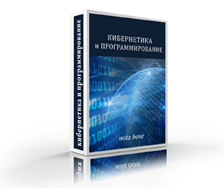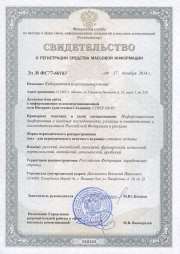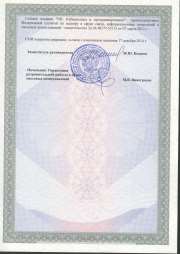MAIN PAGE
> Journal "Cybernetics and programming"
> Contents of Issue є 03/2018
Contents of Issue є 03/2018
|
Tymchuk A.I. - On the choice of gray levels in the problem of texture segmentation of images based on the luminance dependence matrices
|
|
pp. 1-9
|
DOI: 10.25136/2644-5522.2018.3.26170
Abstract: The object of research is the method of textural image segmentation based on the construction and use of luminance dependence matrices. The subject of the study is the influence of the number of reference gray levels used for computations on the speed and quality of image segmentation. Particular attention is paid to the process of constructing brightness dependency matrices, as well as texture attributes, which are calculated on their basis. In the article the author conclude that the choice of the size of the brightness dependence matrix (the number of gray levels) is certainly an important aspect in solving the image segmentation problem, since it directly affects the segmentation quality and program speed. The research methodology is based on the analysis of the method of textural image segmentation based on luminance dependence matrices, testing the segmentation algorithm based on this approach for various input parameters and analysis of results. The main conclusion of the study is the conclusion about the selection of the best number of gray levels in solving the segmentation problem in terms of productivity and segmentation quality. This conclusion is made on the basis of analysis of the results of the program, which implements the algorithm of image segmentation. The analysis was carried out with respect to the time spent on constructing the matrices and calculating the texture attributes, and also with respect to the value of each texture feature separately. The novelty of the study is to determine the number of reference levels relative to the speed and quality of segmentation.

|
Automated systems of engineering process administration |
|
Demichev M.S., Gaipov K.E., Korolev E.M., Demicheva A.A., Narozhnyi A.I. - Formation of the required number of spanning trees
|
|
pp. 10-24
|
DOI: 10.25136/2644-5522.2018.3.26308
Abstract: The subject of the study is to obtain spanning trees for propagating traffic over broadcast channels using the known network topology and known routes. To solve this problem, a mathematical model is constructed in which the network topology is regarded as an undirected graph, but the described solution is also suitable for an oriented graph, where a separate direction is represented by a separate edge. The proposed solution does not require flexible scalability of the network, therefore, when changing the initial input parameters, it is necessary to repeatedly execute the sequence of algorithms described in the article. The development of the algorithm was carried out by an experimental-theoretical method using the mathematical model of a graph constructed from the known topology of the network and the compilation of spanning trees on its basis. The result of the presented work is in determining the necessary number of spanning trees for the optimal solution of the network routing problem. The novelty of this research is the possibility of applying the developed solution in the link-layer networks according to the OSI reference model, exclusively for broadcasting traffic of a given network topology.

|
Knowledge bases, intelligent systems, expert systems, decision support systems |
|
Ponomarev A. - Ontology for describing applications that use elements of crowd calculations
|
|
pp. 25-37
|
DOI: 10.25136/2644-5522.2018.3.26556
Abstract: The purpose of the work is the development of a machine-readable dictionary (ontology) for describing the scope and features of implementing software systems that use elements of crowd computing (information processing systems that include operations performed by people interacting with them via the Internet). Ontology will allow us to apply elements of semantic search to work with scientific and technical information in this relatively new but actively developing field of research, which, ultimately, should help to improve the level of organization of research in it. The ontology is constructed by the "top-down" method on the basis of analysis of the existing conceptualizations in the field of human-machine calculations described in the most frequently cited survey publications indexed in the bibliographic database Scopus. As a result, the ontology CROSS-ODF is formed, which allows describing four main characteristics of applications using the elements of crowd calculations: 1) the features of the problem for which the application was created; 2) the characteristics of the tasks formed by the system to the participants; 3) the contribution properties of the participants; 4) specific mechanisms for attracting participants and processing results. The generated ontology is written in the language OWL 2 and is published in the public domain. The developed ontology can be used in research support systems to simplify the search for crawl computing systems that have certain characteristics and experimental results of using such systems.

|
Methods, languages and forms of human-computer interaction |
|
Cherniltsev A. - The use of multilayer neural networks in problems of updating the user interface
|
|
pp. 38-47
|
DOI: 10.25136/2644-5522.2018.3.23061
Abstract: The subject of the study is the process of forming the parameters of the user interface that is being changed. The author considers the possibility of using neural network methods to process characteristics and classify the categories of user interfaces. To solve the problem studied, the structure of an artificial neural network based on a multilayer perceptron is modeled, the training set of data is prepared and the kit is used to train a simulated neural network. Based on the obtained parameters of the neural network, a mathematical model was constructed and analyzed to solve the problem in question, a study was made of the resulting data for various sets of input data that were not used in training the network. To form the training data set, simulate and train the neural network, the MathLab MathLab system and the Neural Network Toolbox expansion package are used, which allows building a neural network suitable for solving the tasks posed. The conducted research showed that the problem of classifying the parameters of the user interface by a set of input characteristics can be adequately solved with the help of a neural network of direct propagation based on a multilayer perceptron. The most important moments when using this solution are the choice of the architecture of the neural network being created and the preparation of a training data set for building a neural network

|
Systems analysis , search, analysis and information filtering |
|
Toropov B.A. - Theory-graph formalization of some analytical problems arising during the investigation of crimes
|
|
pp. 48-56
|
DOI: 10.25136/2644-5522.2018.3.26287
Abstract: The object of the research are certain analytical tasks that arise before the subjects of the investigation of crimes related to the establishment of interrelations between the defendants of the crime and the circumstances of its commission, such as date, time, place, etc. The subject of the study is a formal formulation of these problems, based on elements of graph theory. Hypothetically, the received formal notations of analytical problems will allow to increase the level of automation of analytical work on the investigation of crimes. The author pays attention to the issues of mapping the data available to the analyst as a graph with subsequent formalization of the facts to be ascertained. The research methodology consists of the fundamentals of graph theory, elements of matrix theory, as well as general scientific methods of analysis and synthesis. The main results of the study are formalized statements of analytical problems arising during the investigation of crimes, such as: the establishment among the members of the organization of the person with the greatest number of contacts; the identification of the person connected with the greatest number of circumstances; the establishment of an indirect link between persons through available information on the circumstances of the crimes committed.

|
Fedosovsky M.E. - Development of methods for system analysis for solving problems of managing technical complexes
|
|
pp. 57-62
|
DOI: 10.25136/2644-5522.2018.3.26613
Abstract: The object of research in this article are methods used to solve problems of designing control systems for complex technological complexes. The development of the theoretical basis for the creation of such methods is based on system analysis and is an important scientific problem. One approach to solving this problem is to develop a universal formalism that will be used to describe a variety of technologies. The choice of the mathematical apparatus determines the very possibility of solving this problem. In addition, the choice of the mathematical apparatus depends on the toolkit with which the user will have to work. In this paper, it is proposed to create mathematical models, methods, and to establish connections using the mathematical theory of categories.The main conclusions of this work are the following:1. The tasks of mapping semantics and the logic of concepts can be solved using methods of mathematical category theory.2. A unified description of families of heterogeneous mathematical models that reflect a different level of abstraction (generalization) at the stage of infologic modeling makes it possible to create formulations for the general definition of models with a description of their structure.

|
Automated systems of engineering process administration |
|
Dobrynin A.S., Kulakov S.M., Purgina M.V., Koynov R.S. - On the use of graph models in automation systems for complex non-stationary process objects
|
|
pp. 63-71
|
DOI: 10.25136/2644-5522.2018.3.26400
Abstract: Managing complex non-stationary systems is a non-trivial task. One of the conditions for effective control is the need to change and adjust the control algorithms under the changing operating conditions of automated systems. The article deals with the construction of control devices based on models of graph theory. As an object of research, approaches and methods of managing complex non-stationary systems are used. An approach based on the domain classification of the factors affecting the control object is considered. Management is considered with significant changes in environmental factors. As simulation methods, simulation and computer modeling were used, which allowed to evaluate the effectiveness of the proposed approaches and management methods. Also, methods of system analysis and modern algorithms on graphs were applied. The presented approach allows to take into account the changing behavior of the non-stationary control object when it is known that certain parameters and factors of the environment can influence this control. The mechanism of the finite state machine allows automatic switching of control algorithms depending on the situation. Studies have shown the expediency of using the proposed approach for the management of complex non-stationary automation systems.

|
Data encryption and data protection |
|
Fayskhanov I.F. - Authentication of users with a stable keyboard handwriting in free text selection
|
|
pp. 72-86
|
DOI: 10.25136/2644-5522.2018.3.25044
Abstract: The subject of the research in this work is a dynamic process of user authentication using keyboard handwriting with free text selection.This process is a regular check of the user on a "friend-to-another" principle: the user entering the text is under continuous monitoring of the system and, in case of non-coincidence of the identification characteristics, the system refuses to continue working.The free sample is understood as follows: the user performs text input based on his current tasks, the system in turn analyzes this work, extracts signs, learns, and in case of inconsistency of characteristics, stops access. The research method used in this work is theoretical, consisting of research, search and calculations. An empirical method is also used, which consists of experiment, comparison, and study. The novelty of this paper is as follows. To date, the most popular authentication method is the password.However, the password gradually displaces the biometric means of authentication. For example, to date, many smartphones are equipped with a fingerprint scanning feature.Nevertheless, despite the effectiveness of this method, the method of keyboard authentication has its advantages: the fingerprint scanning system has the risk of not recognizing the finger, if it is injured, hacking methods of this method already exist and, most importantly, the proposed keyboard handwriting system controls by entering continuously, which will allow first, to prevent an attacker from entering the authentication phase, and also to detect it if, for example, he could, by fraudulent means, gain access to the system.

|
Forms and methods of information security administration |
|
Lyapustin A., Kolesnikova S., Mel'nik D. - The model of protection of multilevel communications
|
|
pp. 87-98
|
DOI: 10.25136/2644-5522.2018.3.26566
Abstract: The work is devoted to the urgent problem of ensuring the security of heterogeneous information platforms, using the system of electronic support of on-line communications processes in a medical institution - e-health online communications. The authors pay special attention to such important aspects of the topic as: the security of heterogeneous information platforms, the model for the protection of heterogeneous information platforms, the classification of communications and the protection mechanisms of MMK. The tendencies for the development of new distributed safety models are considered. This article presents a model of multi-level communications. A classification of communications and protection mechanisms for each level with different security levels using cryptography protocols is proposed. Security flexibility can be provided to health organizations using a variety of key size combinations to protect data and channels. At each level, different levels of security can be provided depending on the sensitivity of the data. Thus, we came to the MMK model as a solution to the problem of communication in e-health and other large organizations with a distributed network of computer communications.

|






